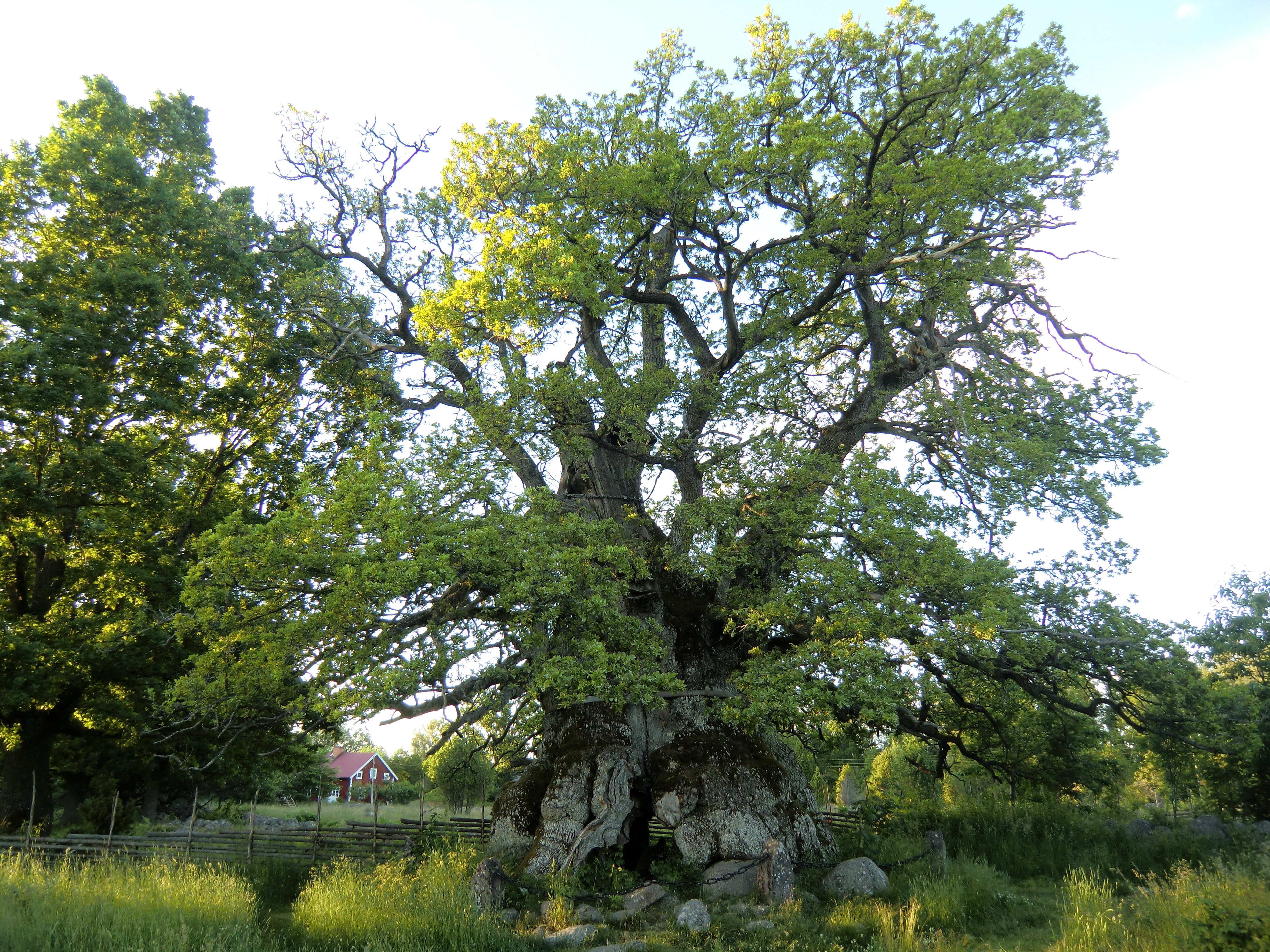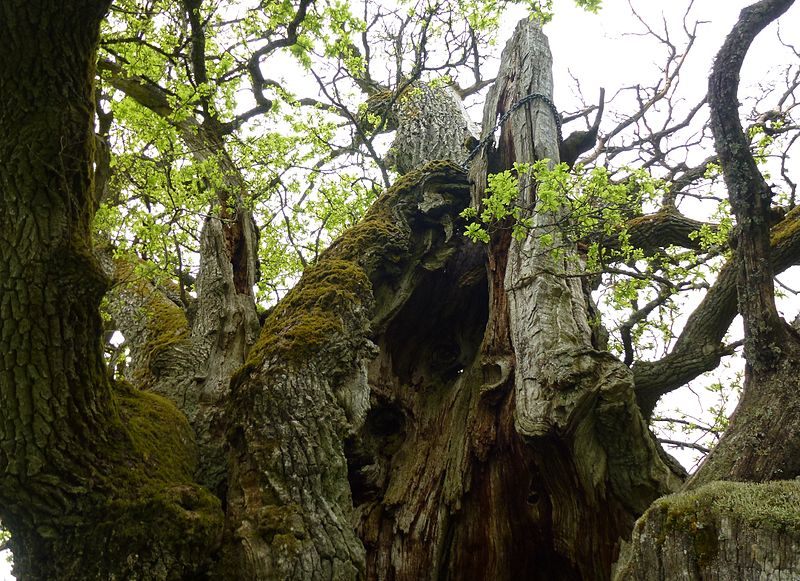The End Is Near for One of Sweden’s Oldest Trees
A giant oak is staring down the leafy green beyond.

The old oak tree known as the Kvill Oak or Rumskulla Oak has skeletal limbs and a hollow heart. The tree has stood in the Swedish city of Kalmar for hundreds of years—maybe close to 1,000, maybe more—and each of those years seems to be written in its branches and bark. Sometime over the centuries, fungi apparently feasted on its heartwood, the deep core of its trunk. Since then, the graceful, arching branches have become less and less green. Last year, only a single one sprouted leaves, The Local reported.
It can be hard to picture the death of a big, stalwart giant that has silently witnessed the march of time, says Matteo Garbelotto, an ecologist at the University of California, Berkeley, whose work focuses on forest pathology and mycology. We think of these trees as constants, but “trees have a lifespan, like humans,” he explains. “It’s just that their lifespan is so much longer than ours.” Oak trees in California, where Garbelotto works, can occasionally live for 700 or 800 years, he says. European oaks can live even longer.
Broadly speaking, several factors can spell the end for various oaks, says Garbelotto. They may be toppled by bulldozers and buzzsaws to make way for development, or slowly defeated by wood-decay fungi (which also help break down and recycle the tree’s nutrients during its life and after its death), or infected by pathogens such as Phytophthora ramorum, which can cause a disease called Sudden Oak Death, marked by cankers in the bark or moldy-looking patches on the leaves. This last scenario might occur with increasing frequency as climates change—providing pathogens with long summers to spread, and leaving trees stressed and more susceptible to infection, Garbelotto says.

The Swedish tree, which stands in a nature reserve close to Norra Kvill National Park, is reported to have been additionally stressed by iron chains and bands that were fastened around it decades ago to hold it steady. This and its advanced age left it vulnerable to a caterpillar infestation and a fungal infection, says Jerry Svensson, manager of nature reserves at the Kalmar County administrative board. Judging by photos from recent years of the tree’s sparse, denuded canopy, Garbelotto suspects that something is also going awry in the roots, which aren’t absorbing enough water or nutrients. (It doesn’t help that recent summers have been especially scorching by Scandinavian standards: In 2018, southern Sweden saw its highest temperatures in more than 40 years.) By the time symptoms start showing up in the branches, Garbelotto says, more than half of the roots might already be compromised. “It becomes really difficult, because you can’t really do anything underground to restore the root system,” Garbelotto says. According to Svensson, after convening a panel of experts from Sweden, England, and Germany in 2013, the county tried several interventions to nurse the tree back to health. They swapped the band for new wire supports, for one thing, and laid down layers of mulch to in an effort to nourish the roots. They watched and waited for a few years, but nothing seemed to make a difference. Things just kept getting worse.

Every arboreal citizen eventually goes to the great, leafy beyond, and it seems this tree’s time has come. “We don’t know if that means this year or any of the following, but we think that we have to be ready for the worst,” Svensson says. “Maybe it has reached its final years in a natural way as we all will do.”
Garbelotto calls the Swedish oak “overmature”—a kindly euphemism for surprisingly old. It’s had a good, long run. But even if death is natural and inevitable, he says, majestic trees have often gained the affection of tourists and locals, who grieve for them when they’re gone. “Sometimes we biologists can be a little cold, and look at these processes too much from the outside,” he says. “Embracing the value of the tree and doing something to celebrate the tree with the community that lives around it is really important.” Garbelotto once attended poetry readings around the base of the beleaguered, several-hundred-year-old Jack London oak, near the writer’s home in California’s Sonoma County. He wonders if people might like to pay their respects to the Swedish oak as it falls apart. If dangerous, dangling branches were removed, he figures, maybe mourners could gather around the fence that surrounds it and watch it go to pieces from a safe distance—and appreciate the beauty of growth and decay. They might also want to scour for acorns to propagate offspring, as scientists did with the Jack London tree, and keep the legacy alive. “Before the tree disappears,” he says, “make sure you celebrate it.”






















Follow us on Twitter to get the latest on the world's hidden wonders.
Like us on Facebook to get the latest on the world's hidden wonders.
Follow us on Twitter Like us on Facebook